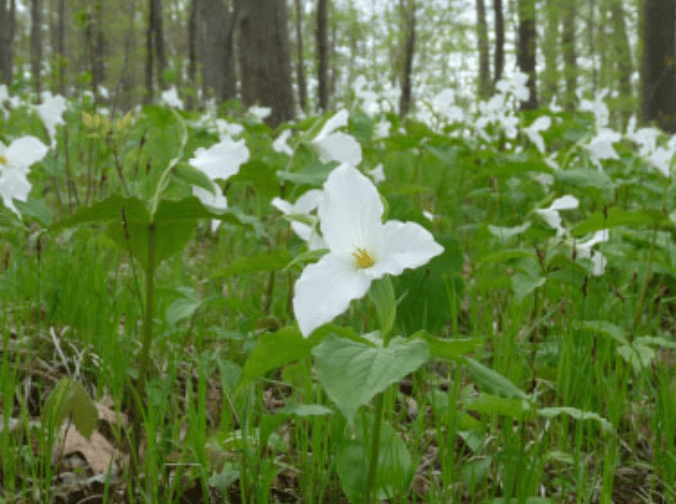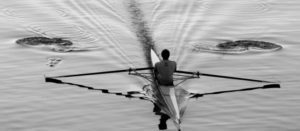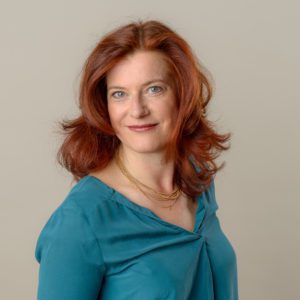What are we looking for when we are observing someone out on the river in a single shell? For me, whether the person is a sculler or a slugger depends on two major qualities. Does the shell pause momentarily in its sliding forward and does the bow sink below the horizontal at the release.
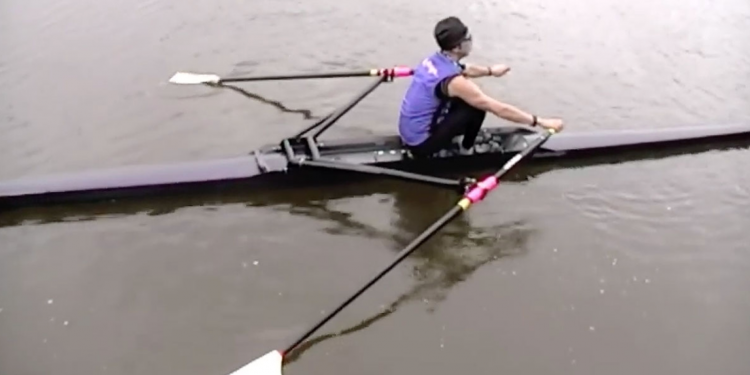 Vince Reynolds Sculling with Jim Joy
Vince Reynolds Sculling with Jim Joy
These are two important tell tale signs of something that is not efficient is occurring with the run of the shell.
The correction method for the stop in the shell run is simply eliminate the pause above the water at the entry point: the blade should just drop in. Eliminating the bow drop is equally damaging to the shell run because now you have a vertical component. This is eliminated by sitting slightly beyond the perpendicular and imaging that the bow is running level at the release. Your hands should complete the drive phase by finishing slightly above the navel. This will keep the movements of the trunk and arms horizontal. So, you have both a physical and mental aspects to the correction. This approach is attempting to analyze the sculling before us. It is not assuming that the successful scullers in the world today are good boat movers. It is using information both from the past and the present to make these judgements. It is giving full weight to the person and his ability to move a shell effectively and not simply to rely on his training numbers on the erg, with the weights or any other tests. It is purely how the organism interfaces with the shell and is able to get the boat to slide effectively through the water.
The search for the correct movements in the sculling stroke must begin somewhere. It deserves so many questions and I am so filled with wonder and awe over the magnitude of this sport and this particular endeavour. Many of these questions were answered during my first session with Robert Fitzpatrick, as he took me through the journey of the 32 movements of the cycle. It left me with a huge headache for my 5 mile bike ride to home in West St. Catharines.
The philosophy of the sculler begins with trying to achieve two things, a smooth muscle action, and a sound, clear mind over the course of the training. We can observe the muscle action and should become sensitive to whether it is fluid or not. The observation of the mind is an aspect that takes some training to perceive. In our immediate viewing of the sculler, we can observe if the facial features show strain. Keep in mind the 100 meter dash runners have no strain on their faces: they are totally relaxed.
The mind begins its work by focusing on the smallest muscular action. If the small part is fluid, then the whole will be fluid. It is the free, smooth, muscle action that is the goal. This smooth movement is the precursor for Flow. In sculling, we try to have flow in the body and in the mind and spirit in the shell. The body actions are directly connected to the workings of the mind. This is a wonderful composite action when all of these components are present and come together. Integrative action is beautiful, inexplicable and a wonder to behold.
Our mental state must return to our childhood play. We must attempt to remember those years when we played hard and long. We played with a clear mind fully concentrated on the activity at hand. We must view the world of sculling with fresh eyes; the eyes of wonder We must strive to touch our sense of wonder, our sense of curiosity because there is so much to learn and to discover as we sit on this seat of wisdom. It is a return to our primal self. When we meditate and sit in the shell, we are sitting on the ageless earth of our forefathers. It is with the eyes of the inquisitive and curious child that we discover that there is so much to take in with our sculling. There are so many questions to ask, as we progress deeper and deeper into the skill. For this reason we do need a competent mentor as a guide in our journey. Someone that we can work with on on our travel into the region of wonder. With proper imaging, we will see our free flowing bodies in total engagement. This state of action is what we will explore in this little book. How do we bring it about, how do we reinforce it and maintain it?
Vince Reynolds sent this, “I think the child like mind is lost when curiosity is replaced with a need to succeed and supplement ones Ego self. Kids are by and large only curious critters and as such they are not driven to attain a certain level of greatness and as such they do not behave in manners to support some ego driven nonsense. They are doing to have fun and enjoy and if they discover neat things along the way this is a double plus.”
The enjoyment aspect of the skill training should be paramount and the improvement becomes part of a natural process. You certainly can observe the difference in the performance of the Olympic skaters when they are performing in the post Olympics period in comparison to when the medals are at stake.
Percy Cerutty, the old Australian track coach, wrote, “If we study the movements of child from three or four to eight or ten years we will see, in most cases, free uninhibited movements- no tensions, no pose, no false assumptions.” Cerutty would include the study of animals along with children in his investigations on training his athletes. This approach was in evidence in the work of the French painter Edgar Degas with his paintings of fine racehorses and young dancer. A child’s exploration of the world is fresh and new and beautiful, full of wonder and excitement. It is our misfortune that for most of us that clear eyed vision, that true instinct for what is beautiful and awe-inspiring, is dimmed and even lost before we reach adulthood. It is an emphasis on the person’s athleticism that we must promote. The child has this quality. We must as coaches rediscover and promote theses primitive qualities in our young athletes We should take an integrated approach to the training of the whole body including the mental and spiritual aspects. This approach should be foremost in the mind of the coach. In rowing these qualities are eliminated from the young athlete by the overuse and over testing on the ergometer and by taking a numbers approach for evaluating the progress of training. The young imagination is stifled. The fun and enjoyment aspects are overlooked. We then become separated from the shell. We lose our sensitivity to its movements. We forget our overall posture in the shell. We forget our posture as a person. Our carriage becomes misaligned. This childlike mind is what I remember about my old friend Marvin Bram, professor Emeritus of History at Hobart and William Smith Colleges. On campus walk with Marvin he pointed to a lamp post and stated that the structure came with a cost. I thought about his comment for a while and realize that he was right. Our world of nature had been disturbed.
James Dundon a teacher and sculling coach wrote me this note recently, “your writing about discovering and sustaining a child like innocence with sculling is something we focus on at 612 Endurance. For example, we play a game called predator/prey on our steady states where we adapt rating to hunt one another down or to evade capture. We also use gamesmanship on our drills by challenging ourselves to take the most number of strokes on the square without losing our balance (I do not recommend square blade sculling). Mostly, we work on being aware of the larger circle around us; bow and stern and the tips of each blade. Your focus on discovering a childlike pleasure in that pursuit is definitely what it takes to find deeper meaning in the endeavor… absolutely beautiful. I need to read more about the quantum sculling approach to fully comprehend your reference. I also really appreciate your reference to St. Francis as a guide to gently sharing. We try to embrace that approach by sharing what we see in one another. We’re attempting to create an atmosphere that attracts folks who believe in gently sharing and helping one another, as it will hopefully benefit the other person and ourselves. The process of teaching, a challenging concept to another person, can somehow result in the teachers gaining an advanced improvement in their own work.”
The pursuit begins with our childlike love of the Earth and the Universe beyond. We must observe closely, engage, and embrace, wonder, and understand the natural world around us no matter how simple or elaborate that settling maybe. It maybe the city park, the farmland or the small town. We must discipline ourselves to really see the living trees around us. I remember when we left Connecticut years ago I embraced the large and beautiful maple in our backyard and said goodbye to it. It was my friend. On so many nights I can remember sitting under this beautiful tree with a sense of wonder and appreciation for its beauty. I was being childlike in my relationship to the tree. Recently, there was a large Black Maple in Boston that was to be cut down and the inhabitants of the city made an effort to hug the huge tree before it met its fate. The hugging brings us closer to the earth and our real experience. It touches our deeper spirit and the flexibility of our bodies and mind/spirit. You look at the world around you differently, with different eyes and different sensing mind. After our hill runs at Hobart and William Smith Colleges the students would terminate their runs with hugging a tree.
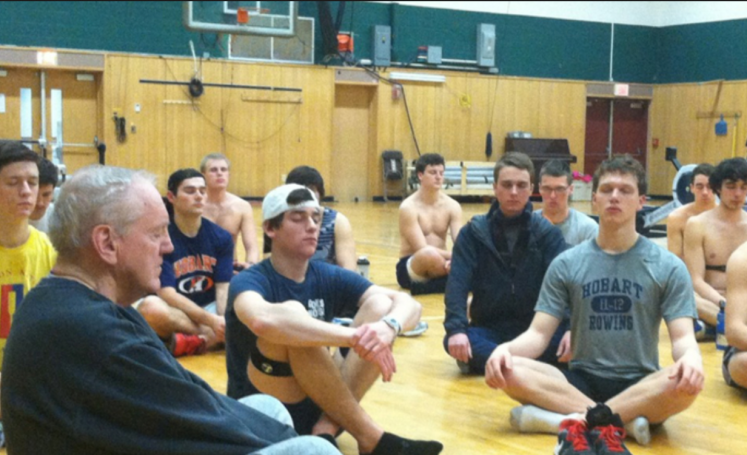

On a daily basis you have the athlete return to his sensing state by having him sit on the floor on a regular basis. As he feels his butt on the floor he moves a little closer to the earth and the natural world. We do the same when we sit and play in our shell.This is a good starting point for returning to his childlikeness. I was encouraged to take a few moments to reflect before doing a piece on the water. The regular practice of quiet sitting is essential for achieving the clear mind of the child. With modernity we seemed to have lost our capacity to sit on the earth on various occasions. This is unfortunate because as we pointed out this could be the beginning of our childlike wonder. We must take every opportunity to sit on the earth. The Japanese sit on the floor for their meals and we in the west sit on chairs.
Plotinus felt that this practice of meditation is where you come to realize truth from the inside and not from the outside. He felt that the spirit develops until there is no difference between the “knower, the knowing, and the known.” Plotinus is directing us to a higher purpose and a higher mind that can be begun at an early age. However, we must on a daily basis return to our prayer cushion for precious moments of silence.
For Percy Cerutty, the great and unconventional coach of 50 years ago “athleticism had to be adult play. Children will play until exhausted.” So we have to return to the role of being a child with our sculling and hopefully with our training in general. It has to be a form of play and enjoyment.
The other day in an AT&T store I was treated to a TV display of playfulness watching the long-tailed macaque monkeys. They are so fluid, and flexible, simply great athletes. Children have the same capabilities.We cloud this development with too much programming, drilling and not enough free play and exploration. We must give our young athletes an opportunity to breathe.
From a small Ontario town I began my voyage into Nature at an early age.as I was constantly outside in all types of weather. The Western hill section of St. Catharines became my playground for sandlot football, for baseball and softball, for school soccer, and for lacrosse with the “Hill’s” Shamrocks. We also had our own skinny dipping swimming hole in the old Welland canal. We usually played our pickup games in our stocking feet and it was a great experience to feel the cold, fall grass under our feet. We felt that we were connecting directly with the earth.. We were part of a greater universe.
On the Western Hill it would be on the Station Park field and our football games that our expression of flow would really take place. In the immediate post World WarII period we would try to emulate the moves of two football heroes, Joe Krol and Royal Copeland. They became our models for flow. Being a pre-tv era, we had to rely and hang on every report of their exploits in the Toronto newspapers. We could only imagine their fluid movements for the Toronto Argonauts and we allowed our young imaginations to run wild. Our mothers did not particularly welcome our dirty wet socks from our shoeless play on the park.
We played from ages 10-15 against the local private school, the famous Ridley College. I had the responsibility to arrange the games through the Ridley school and to closely monitor our urchins that they did not steal any equipment from the Ridley boys after the games were completed. The Ridley boys were completely outfitted and we were in our everyday clothes. It certainly hurt when they stepped on our feet with their cleats. We progressed in this play through the various grades Looking back it was a great learning experience for me in leadership as I served as the organizer, coach and disciplinarian for our young team. It certainly provided me with an opportunity to grow and experience.
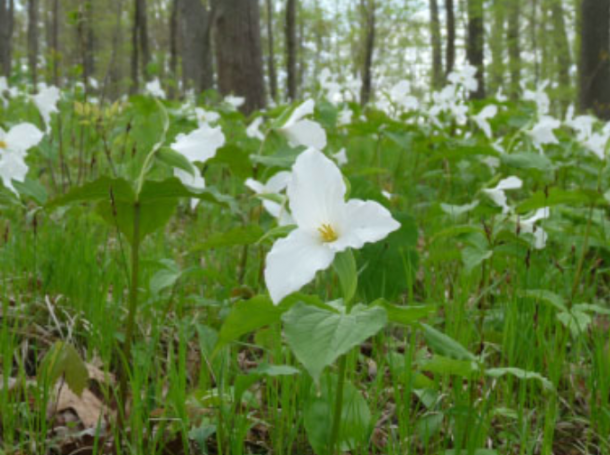

So, the summer months were idyllic as we were constantly on the move. My contemplation of nature came a little later with my Sunday visits to the old dam that was situated farther upstream from the swimming hole. Here I could bask in the sunlight, watch the meandering stream and spend time with my young consciousness. In the early spring the opposite bank was filled with gorgeous white Trilliums the official flower of Ontario. We realized that we could not pick the Trillium .. We could only admire them and feel the pride of knowing that this was our Provincial flower. The total scene by the stream was a wonderful example of Flow. Observing the quiet continuous flow of the stream became a beautiful metaphor for the concept of smooth movement that I would try to duplicate in two sports over the next few years, in wrestling and in sculling. The moves and movements had to become instinctual and continuous. It was a struggle to achieve this state because the academic mind and thought kept intruding into the picture. It was definitely two distinct ways of looking at the world around us. To achieve the smoothness in the muscle action you had to think with more feeling. You had to think more instinctively. My childlike mentality prevailed over the more rigid and arid academic approach to learning the skills. I would playfully try new moves and concepts. There had to be a high degree of exploring and play involved in your skill learning. Fortunately, my coaches in both sports were supportive, and so, I did achieve a degree of Flow in both sports. So, my attachment to the natural world began for me over 60 years ago. I recall that I was slightly out of the mainstream with my peers and their thinking at the time. Sometimes, I feel the same today. People fail to see the connections between things.
My meditation practice would not surface until much later. When I learned to free up mind and have it work with my body and spirit. When I flowed, my whole body flowed. In the following years I refined my thoughts on the subject of flow by recognizing the importance of smooth muscle action. And I tried to carry these concepts into my everyday life, well beyond the sphere of my sporting activities. My subsequent coaching permitted me to expand my understanding of the flow concept even further. It became part of myself and the quest for understanding became an intimate part of my coaching. I looked for Flow everywhere.
The Flow of the Body begins with a careful monitoring of your own individual movements, while standing, walking, sitting, running, lifting or sculling. Whatever the action is. It involves how you get into and out of the shell; every move has to be athletic. Entering a shell hold one hand holding the handles and the other hand on the gunwales or rigger if possible. Place one foot on the dock and the other foot between the tracks, shove off and step into the shoe and sit down. Then bring your other foot forward into the shoe. You had to recapture the flexibility of your early teenage years. Entering the shell was part of your return to a state of Wonder.
Work over your handles to tie your shoes. All of these movements should be completed fluidly and with a distinct mental sense of focused purpose. It was by replicating the movement that flow was developed. You followed the same pattern over and over until it became part of you. This physical patterning plus the mental concentration on the pattern of the movement was what consolidated the flow and the ability to be able to call it up immediately.
Our approach to the sculling training should also be one of curiosity and wonder. We have to have the eyes and feelings of the child. You are fully aware of every movement, even carrying the oars and placing them in a deliberate fashion onto the dock. Each movement has to be carefully examined for smooth motion. So you have to thoroughly embrace the movements of the body. Every action has to be deeply felt in your physical and mental body no matter how small the movement may be. You are operating as a whole person, aware, conscious and concentrated. You see yourself. You are an athlete, operating as an athlete at all times. Your movements become who you are. The flow of the body becomes intrinsic. I recall vividly how I would employ a slow motion in approaching the dock at the end of each practice session and would effortlessly slip alongside the dock’s edge. So a major ingredient of Flow is the consistency of the movement. So simply do the same movement over and over.
It would be a few years from these playful moments that I would explore the literary works of excellent guides connecting me to nature. I found my guides in the literature of Heraclitus, Thomas Berry, Wendell Berry, Pierre Teilhard de Chardin, and David Bohm,and the old sculler and master builder, George Pocock. This odyssey began for me with my coach Bob Fitzpatrick urging me to visualize the stroke cycle with “The Mind’s Eye.”It was around the same time that I discovered two little books, Eugen Herrigel’s, Zen in the Art of Archery and Shunryu Suzuki’s, Zen Mind, Beginner’s Mind. These two gems would remain an integral part of my thought and library wherever I landed. The reading is so important for discovery of new ideas and for the expansion of one’s knowledge.
I have thirsted for more of this type of reading over the subsequent years. Recently, I have returned to the work of Rachel Carson. It is a deliberate attempt to connect the workings of my mind with the movement of my physical body. I want to achieve flow in my mind and in my writings. Great writers and great writing assist with this cause. From Plotinus, it was seeing the oneness in everything. He adhered to the adage of “living in the world without being of the world.”
Again today we can find excellent guidance from our ponds, rivers, lakes and even our oceans. We should recognize the living nature of water. This is particularly important for our sculling and connecting the blade to the water. It is powerful bonding. We seek to engage the Earth on our hikes to the countryside and to the nearby glens and ravines. Our spirit is renewed and the plasticity of our minds permits us to include wholeness and integration. We embrace the Natural World. We seek a special resonance with it. Today, we have our own nature sanctuary across the street from our apartment complex and we plan to spend a good deal of time there in this coming year. It is where we can find the silence on a daily basis.St. Francis reminds us of the benefits from simplicity and gentle sharing as well as the experience of solitude, stillness and silence. All of this practice and thought can easily be woven into the fabric of the sculling stroke.
Vince Reynolds, my friend and devotee to quantum sculling, has extensive observations on the movement of the stern when he writes “It seems as soon as I become the least bit attentive to detail and start “ pulling or yanking” at the change of entry then the wake reflects an immediate loss of continuance of movement. This effects the entry and the release movements and the levelness of the pull. Watch the bow and make sure that it is running level. Do not rush or yank any part of the body. We must become lighter in touch.”
Here he is directly applying the movements of his body to the movement of the shell. Yes, you have to go lighter, especially with the fingers. There is potentially so much power in the fingers. I think that this was an excellent observation on Vince’s part. He is engaged with a childlike approach to investigation of the various movements. I recall telling him in the fall to take more time with the end of the drive, your release and the follow through. Don’t rush or yank the handles.
Lately, I have been very aware to live and act as a Quantum person and the work of David Bohm has become hugely important to me. Bohm expressed this same sense of wonder as he explored the world of quantum physics. Being integrated and connected, has taken on special significance for me So, it is an internal odyssey that is never ending or complete. It is our consciousness that we must explore and come to know more deeply. It is here inside of us where our being really lies. This short book will try to explore the various strands of this consciousness, the childlike wonder, the emphasis on smooth movement and how these qualities apply to our sculling. As we explore the workings of each movement we should operate with a sense of wonder and we must keep our minds open and curious. How do you develop a child like mind in our present environment? This is a profound question. My only answer after much soul searching is to live with honesty, curiosity, and simplicity. These are the qualities required for approaching the learning of sculling. What do you think? We must attempt to be childlike.
The process involves our love of the Earth and the Universe beyond. There are excellent literary guides found in Heraclitus, Thomas Berry, Wendell Berry, Pierre Teilhard de Chardin, David Bohm,
Our spirit is renewed and the plasticity of our minds permits us to include wholeness and integration. St.Francis reminds us of the benefits from simplicity and gentle sharing as well as the experience of solitude, stillness and silence. All of this is woven into the fabric of the sculling stroke. Our return to the stroke is an occasion to vibrate at a much different frequency than is usually found in our every day lives. It is the wholeness of the operating cycle and the closeness to primeval nature that provides us with this profound opportunity
This philosophy began for me over 70 years ago on the banks of the headwaters of the 12 mile creek in St. Catharines, Ontario. It led me to observe my own body movements as I was looking for smooth muscle action. At the creek side the setting was the slow, meandering of the stream. It was a beautiful introduction to flow that I would employ in two sports over the next few years, in wrestling and in sculling. The moves and movements had to become instinctual and continuous. It was a struggle to achieve because the mind and thought kept intruding into the picture. However, I did achieve the flow in both sports. In the following years I refined and learned more about this phenomenon. It has been my life’s pursuit off the mat and out of the shell. I have tried to witness the flow in my everyday life. I have attempted to act and proceed as a Quantum integer. So the works of David Bohm, Michael Talbot, are very important to me. As well, Sri Aurobindo and Plotinus have taken on a special meaning for me. The writings describe the connections between people and things. To actually see this we must operate in the present. So, it is an odyssey that is never ending or complete. In many ways it is a return to the land of wonder, to the land of being a child again.
